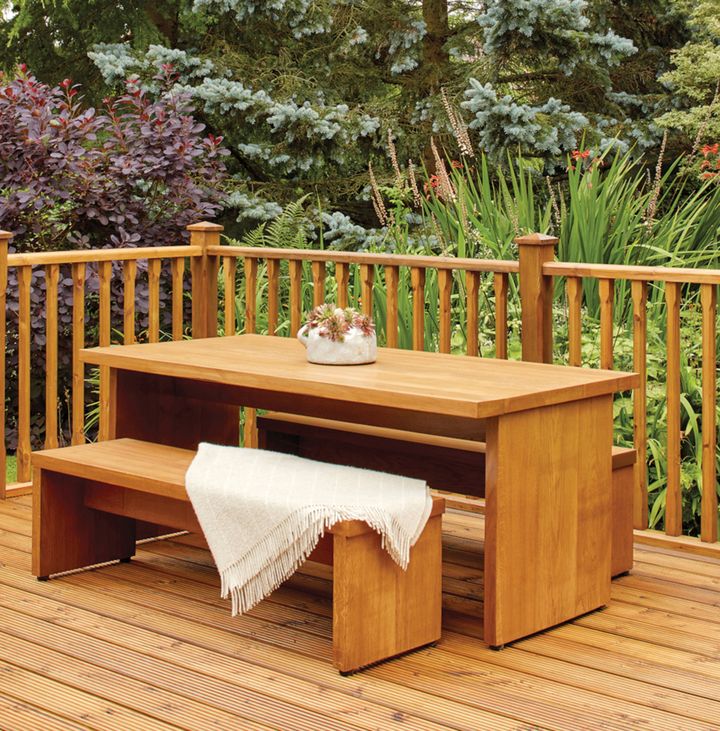Which ultimately means getting your garden furniture out and making sure it’s looking its best. However, as Jimmy Englezos, senior brand manager from Ronseal, points out: “Thanks to a particularly wet spring [and summer], your furniture might need some overdue care and attention.” To give your garden furniture a new lease of life, Jimmy shares his definitive guide to giving it an overhaul, from cleaning to restoring.
.. “Properly maintaining and cleaning your garden furniture will help keep it in good condition, year after year,” says Jimmy.

“And if you’ve spent money on high-quality furniture, you’ll undoubtedly want to get the most out of it.” He says it’s a quick and easy job you can do just before the next sunny dry spell arrives, with various ways to go about it. Garden furniture cleaners – these specially formulated cleaners remove the build-up of dirt and can get rid of moss and algae.
Detergent and water – you can make a budget-friendly cleaning solution with household detergent and warm water. Vinegar and baking soda – a mixture of white vinegar mixed with bicarbonate of soda can create a fantastic organic cleaner. Firstly wipe down the surface, says Jimmy, using a sponge or soft-bristled brush to remove any cobwebs, dust or surface dirt.
Secondly, apply the cleaning product depending on your chosen solution; focusing on a small patch at a time, he says, and work in a circular motion, removing stubborn spots. Thirdly, rinse with water. Using a hosepipe or watering can, thoroughly rinse down the entire surface to remove any remaining product, highlights Jimmy.
Cleaning metal furniture Firstly, remove surface dirt. Using a soft-bristled brush, Jimmy says to wipe down the entire surface to remove any grime. “Make sure to test the brush on a small area beforehand to ensure it does not scratch.
” Then wash down, using a soapy bucket of water and brush to clean the metal. He says a toothbrush is handy for small intricate areas. Next, remove any rust.
Firstly, remove crumbs and dust, using a soft brush or even a household vacuum cleaner. “Then, use a bucket of warm soapy water and sponge to wipe down all the surfaces. Leave to dry before replacing any soft cushions,” Jimmy says.
Over time and exposure to the elements, wooden furniture items can turn a dull grey colour, making them look old and run-down, underlines Jimmy says. “But rather than investing in brand-new items, these existing pieces can easily be restored to their former glory by using some wood restorer.” He says to clean the surface, making sure any algae, mould or dirt is removed beforehand and the furniture is completely dry.
Then get loads of restorer on a paintbrush and coat the entire surface of the item of furniture. “Making sure to scrub the restorer into the surface using back-and-forth sweeps.” Leave the restorer for 15 minutes to work, says Jimmy, but make sure it doesn’t dry out.
“If the surface starts to dry, apply more restorer and give it a scrub.” Once the 15 minutes have passed, he says to use a garden hose to thoroughly rinse the furniture to completely remove the restorer. “Leave to settle for a couple of days before applying some wooden stain or oil to protect the finish.
“It’s never advised to leave wooden furniture bare as this could cause it to rot in the rain, or go grey in the sunshine,” adds Jimmy..



















